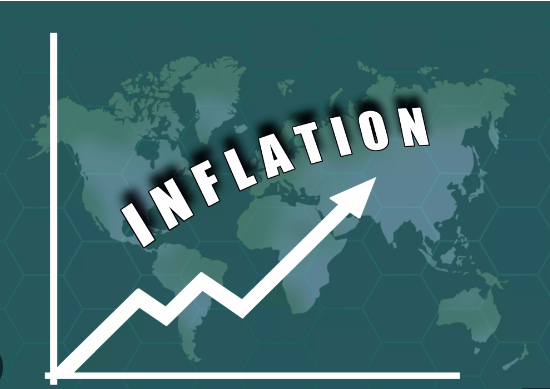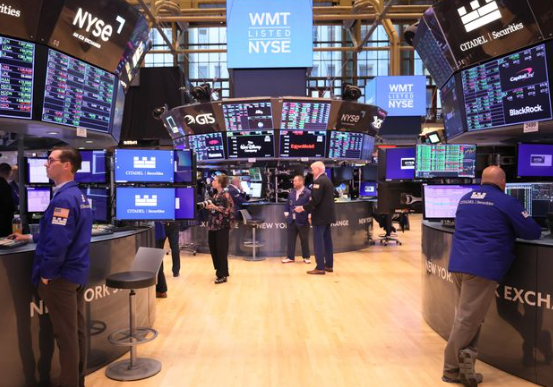According to Federal Reserve data, pandemic stimulus, a healthy employment market, and rising stock and property values increased net worth at a historic pace.
According to Federal Reserve data released on Wednesday, American families enjoyed the biggest increase in wealth on record between 2019 and 2022, as soaring stock indexes, rising property values, and repeated rounds of government stimulus left people’s wallets better.

After adjusted for inflation, median net worth increased by 37% over those three years, according to the Fed’s Survey of Consumer Finances, the largest increase since records began in 1989. At the same time, after accounting for price increases, median family income climbed by 3% between 2018 and 2021.
While income improvements were most obvious among the wealthy, the data showed that Americans made nearly universal financial success over the three years preceding the pandemic. Savings increased. Credit card balances have decreased. Retirement accounts grew in size.

Other data from both the government and the business sector pointed at those advances. However, the Fed report, which is issued every three years, is regarded as the gold standard in data on household financial status. It provides the most detailed picture of everything from savings to stock ownership across race, wealth, and age categories.
This is the first time the Fed study has been released since the coronavirus outbreak, and it provides insight into how families fared during a turbulent economic period. People lost their employment in large numbers in early 2020, and the government attempted to cushion the pain with a variety of aid packages.

Recently, the job market has been growing, with relatively low unemployment and high salary growth, which has boosted wages. Simultaneously, rising inflation has erased some of the gains by making daily life more expensive.
Inflation F.A.Q
What is inflation?
Inflation is the gradual loss of purchasing power, which means that your dollar will not go as far tomorrow as it did today. It is commonly represented as the annual change in prices for common products and services such as food, furniture, clothing, transportation, and toys.

What causes inflation?
It could be the outcome of increased customer demand. However, inflation can rise and fall due to factors other than economic conditions, such as restricted oil production and supply chain issues.
Is inflation bad?
It is determined by the conditions. Rapid price increases are problematic, while moderate price increases can lead to increased salaries and job development.
How does inflation affect the poor?
Inflation can be especially difficult for low-income households since they spend a larger portion of their income on basics such as food, shelter, and petrol.
shoulder for poor households because they spend a bigger chunk of their budgets on necessities like food, housing and gas.
Can inflation affect the stock market?
Rapid inflation is always bad news for stocks. Financial assets in general have generally performed poorly during inflationary periods, but tangible assets such as houses have performed better. According to the data released on Wednesday, without correcting for inflation, median income would have increased by 20%.

When compared to the aftermath of the previous recession, which lasted from 2007 to 2009, the financial gain, particularly for poorer households, is extremely impressive. After the crisis, it took years for household wealth to fully recover, and for some families, it never did.
Also Read: Netflix Earnings: User Growth Will Show That The Most Recent Correction Created A Buying Opportunity
Between 2019 and 2022, income increased across all classes, but growth were greatest at the top, implying that income inequality grew. This resulted in a significant disparity between median income — the amount at the midpoint among all households — and average income, which totals all wages and divides them by the number of households. Average income increased by 15%, one of the greatest three-year increases on record.
The issue of wealth inequality was more complicated. Because the wealthy own such a big proportion of financial assets in America, wealth disparities tend to widen in absolute terms as the prices of stocks, bonds, and homes rise. True, wealth grew far faster in dollar terms for wealthy families.

However, in the three years covered by the poll, poorer families experienced the greatest percentage rise in wealth. The bottom quarter of the population had a net worth of $3,500 in 2022, up from $400 in 2019. The median net worth of the richest 10% of families increased to $3.79 million, up from $3.01 million three years ago.
Because of the way the data is collected, it is difficult to determine how much pandemic-related payments would have influenced the numbers. To the extent that households kept one-time cheques and other forms of assistance received during the epidemic, those would have been included in net worth calculations.
Families were also receiving pandemic payments when the income metrics were collected in 2021, implying that factors like expanded unemployment insurance were very likely reflected into the statistics. Some Americans appear to have used their improved financial conditions to invest in stocks for the first time: 21% of families bought equities directly in 2022, up from 15% in 2019, the highest increase on record. Many of the new stockholders appear to be tiny investors, which reflects, at least in part, Americans’ enthusiasm for “meme stocks” such as GameStop during the outbreak.
According to the Fed’s newly disclosed data, considerable disparities in income and wealth exist across racial groupings, despite the fact that Black and Hispanic families enjoyed the greatest percentage gains in net worth during the epidemic period.
The median net worth of black families increased by 60% to $44,900. This was a larger gain than the 31% growth for white households, which increased their household wealth to $285,000. Hispanic families’ net worth increased by 47 percent.
At the same time, racial and ethnic minorities experienced weaker income growth through 2021. After adjusted for inflation, earnings for black and Hispanic households fell somewhat, while white families saw a slight increase. The report includes data on Asian families for the first time, who had the greatest median net worth of any racial or ethnic group.
While the statistics in the research is little antiquated, it highlights how strong American families were as they emerged from the pandemic. Solid net worth and rising wages have enabled individuals to continue spending into 2023, allowing the economy to grow at a steady pace even as the Fed has raised interest rates to calm it down. That tenacity has fueled hopes that the Fed would be able to pull off a “soft landing,” slowing the economy gradually without hurting consumers so hard that America enters a recession.
Click here to learn more about the pandemic.
Also Read: Bajaj Auto Ltd Q2FY24 Result: Revenue Increases 6% While Net Profit Climbs To Rs 2020 Cr
image source: google




































